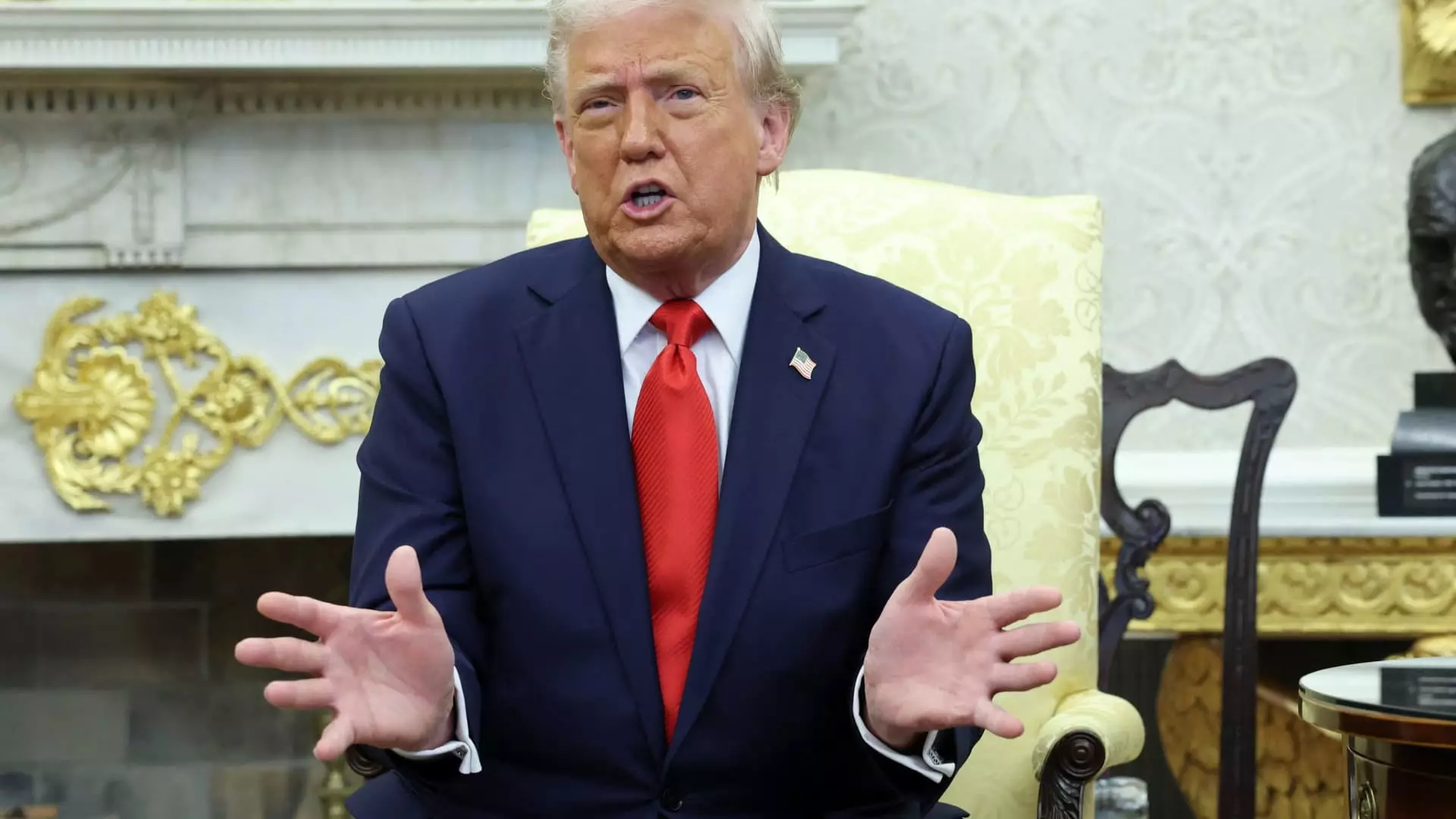In an unexpected twist, the first quarter of 2023 has witnessed Wall Street banks amassing a staggering $16.3 billion from stock trading—an impressive 33% hike compared to the prior year. This financial windfall comes on the heels of President Donald Trump’s tumultuous reign, which, instead of boosting traditional investment banking routes, seemingly catapulted trading floors into uncharted profit territory. Goldman Sachs, Morgan Stanley, and JPMorgan Chase each reportedly raking in around $4 billion from equity trading alone, raising eyebrows within both the finance sector and among economic policy analysts.
While such achievements are often hailed with praise—analysts terming them as “spectacular” and “extraordinary”—it’s essential to scrutinize whether these triumphs genuinely reflect a robust economy or merely echo an artificial bubble filled with risk and volatility. Amidst rising interest rates, regional banking struggles, and an uncertain job market, it begs the question: are we genuinely witnessing a healthy financial ecosystem, or are we simply reveling in the glow of short-term trading gains that mask deeper economic malaise?
Trading Vs. Investment Banking: A Shift in Focus
Contrary to expectations that the Trump administration would catalyze a resurgence in investment banking through high-ticket deals and IPOs, the reality is starkly different. Corporate America sits on the sidelines, hesitant to make significant strategic moves amidst the ongoing economic turbulence. This stagnation positions trading desks—not investment banks—at the forefront of profit generation. It’s ironic; the traditional lifeblood of Wall Street appears to be losing its importance in favor of swift, reactive trading strategies.
Rather than guiding major corporate mergers and acquisitions, Wall Street’s heavyweights have turned to the vantage point of market fluctuations. Traders are now the de facto movers and shakers, capitalizing on daily price variations rather than the long-game strategies that once defined the industry. This paradigm shift raises significant concerns regarding the sustainability of these profits. How long can trading desks thrive in a precarious environment propounded by political upheaval and intricate tariff machinations?
Volatility: The Double-Edged Sword
Analysts are quick to point out that volatility, if it remains on the agenda, will ensure that trading desks remain busy. Notably, the chaotic nature of the market under Trump’s leadership—characterized by trade wars and abrupt policy changes—has paved the way for needless fluctuations, which traders skillfully exploit. But let’s consider the ramifications: while profits surge for some, are we not fostering an environment of instability that could collapse under its own weight?
The forecast from JPMorgan, predicting an uptick in U.S. unemployment to 5.8% later this year, is a sobering reality check. The lavish gains seen today may inevitably lead to harsher downturns as the fragility of the broader economy becomes apparent. With regional banks struggling due to lackluster loan growth and their operations primarily limited to traditional banking, Wall Street’s trading behaviors throw them further into the abyss.
Financial Giants Benefitting at the Expense of Others
The profits generated by the largest U.S. banks appear to come at the cost of their smaller counterparts, who are left floundering in an environment void of steady growth and comfort. As corporate leaders hesitate to make bold, calculated moves, the disparity grows—large firms hogging lucrative trading operations while their regional counterparts languish, encumbered by increased risks and defaults.
One must ponder the ethics behind such disparity. When a minuscule percentage of financial institutions reap unreasonably large profits amidst downturns, we aren’t just witnessing an economic anomaly—we’re revealing a systemic flaw within our financial landscape. Isn’t it time we reconsider how we value profit and prioritize broader economic stability over fleeting gains from financial engineering?
Riding the Wave of Noisy Markets
As Wall Street adapts post-2008, steering away from traditional investment strategies, it introduces a problematic frequency of transactional volume devoid of substance. Fast-paced trading is here to stay for now, but at what long-term cost? The reality is unnerving—while traders bask in their newfound glory, we may be sowing the seeds for another significant economic downturn, one that could catch everyone off guard once the music stops.
While the financial results from Wall Street might be nothing short of phenomenal at a glance, an undercurrent of instability lurks just beneath. When the bubble bursts—as bubbles inevitably do—who will be left standing to face the music? The spectacle may be dazzling, but the consequences haunt us all.

